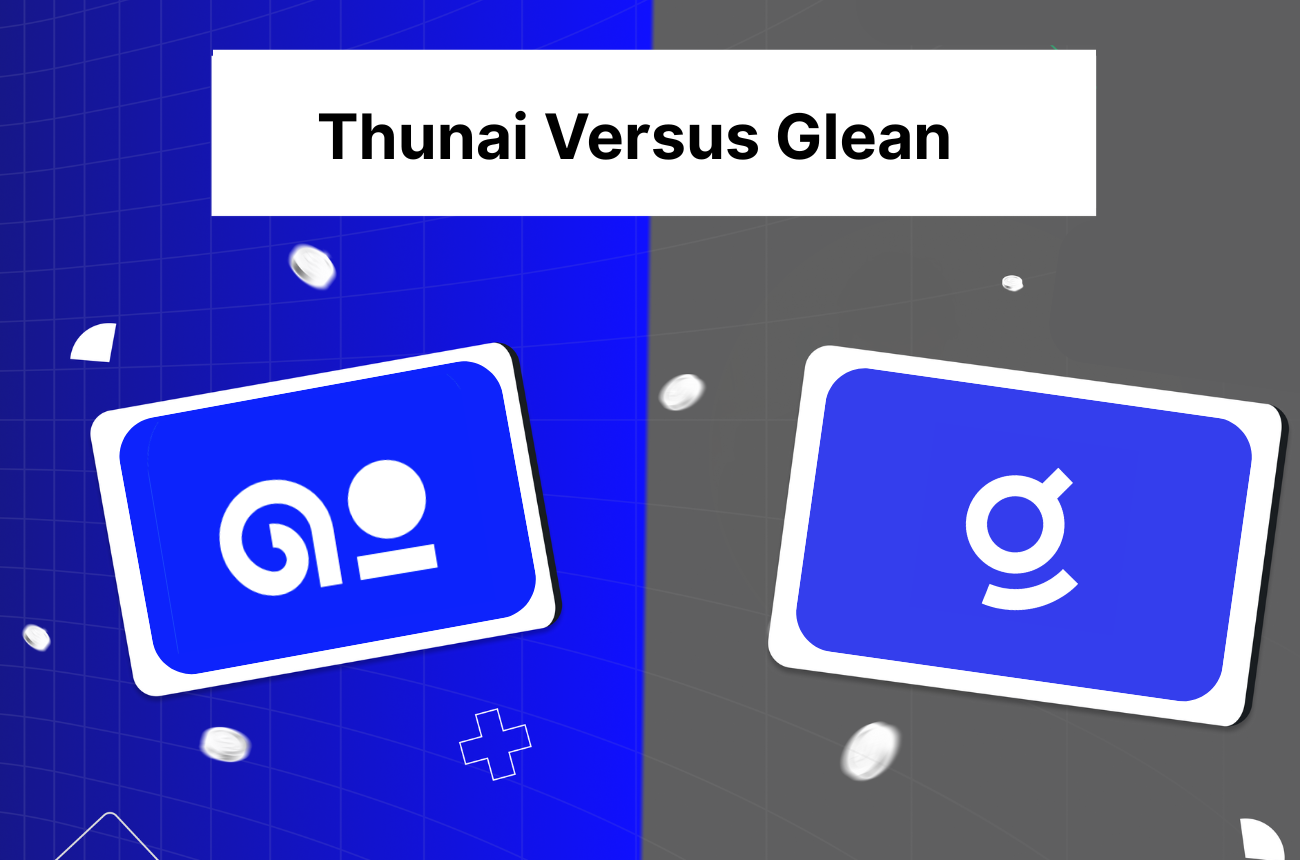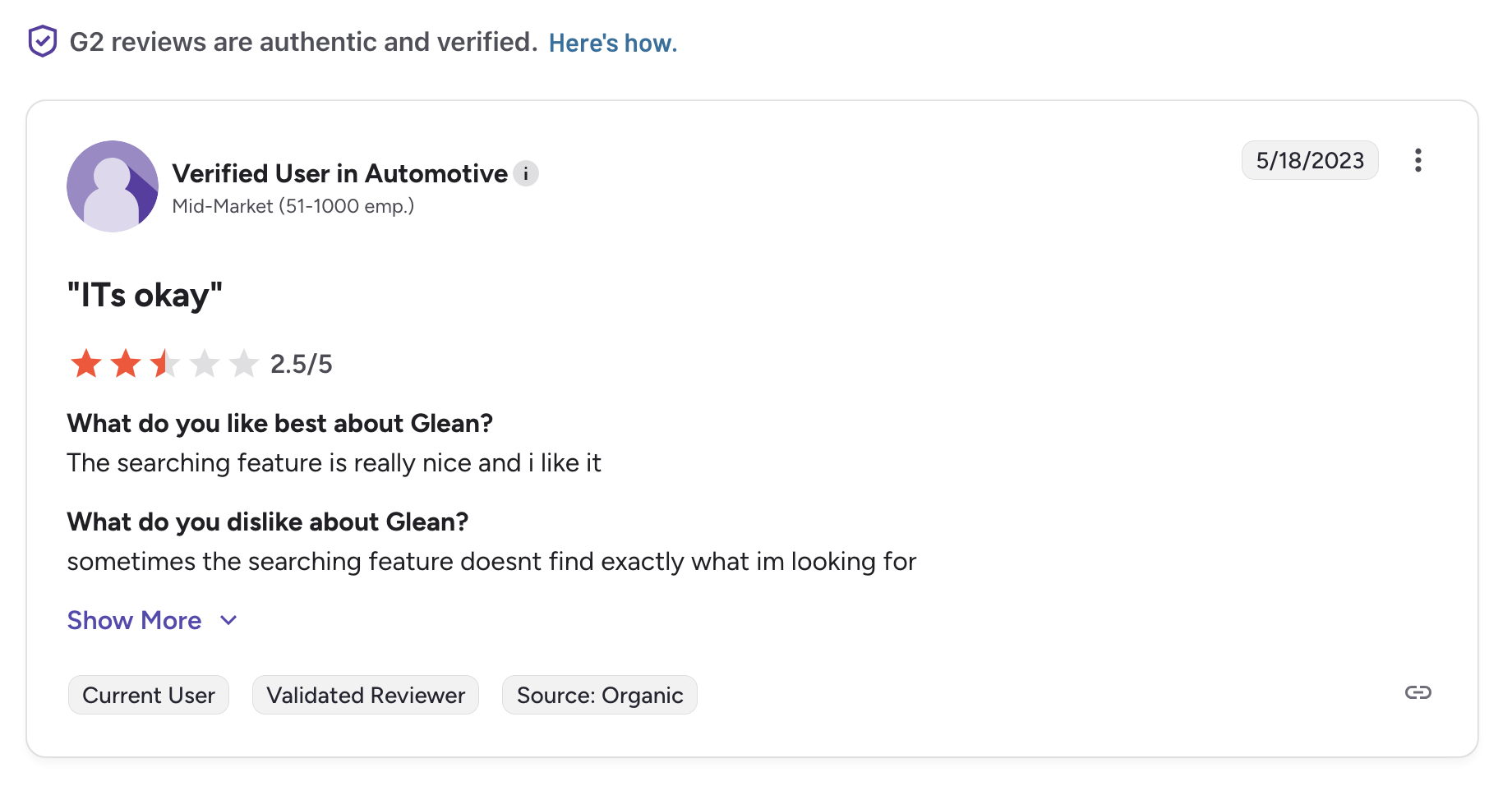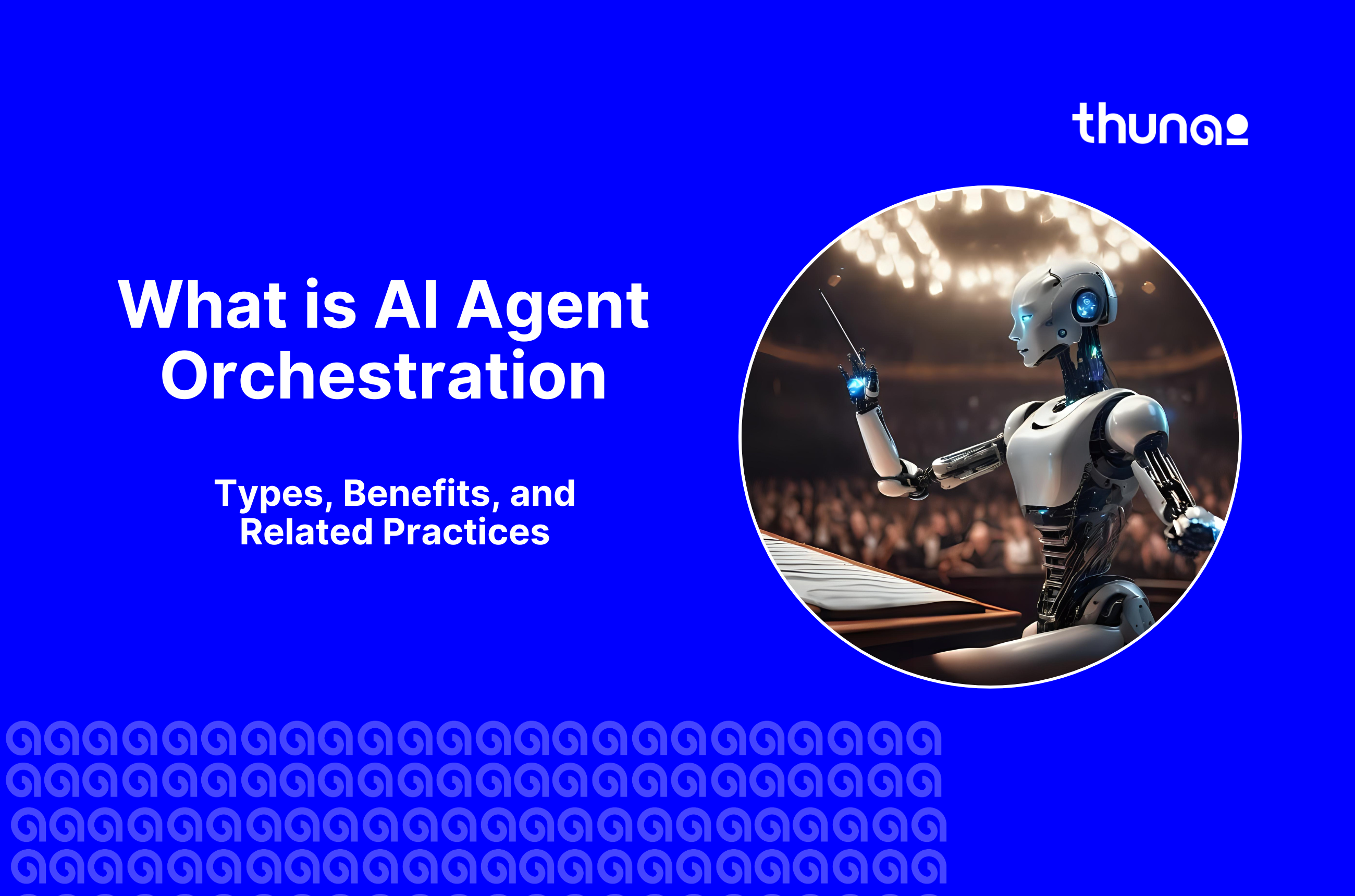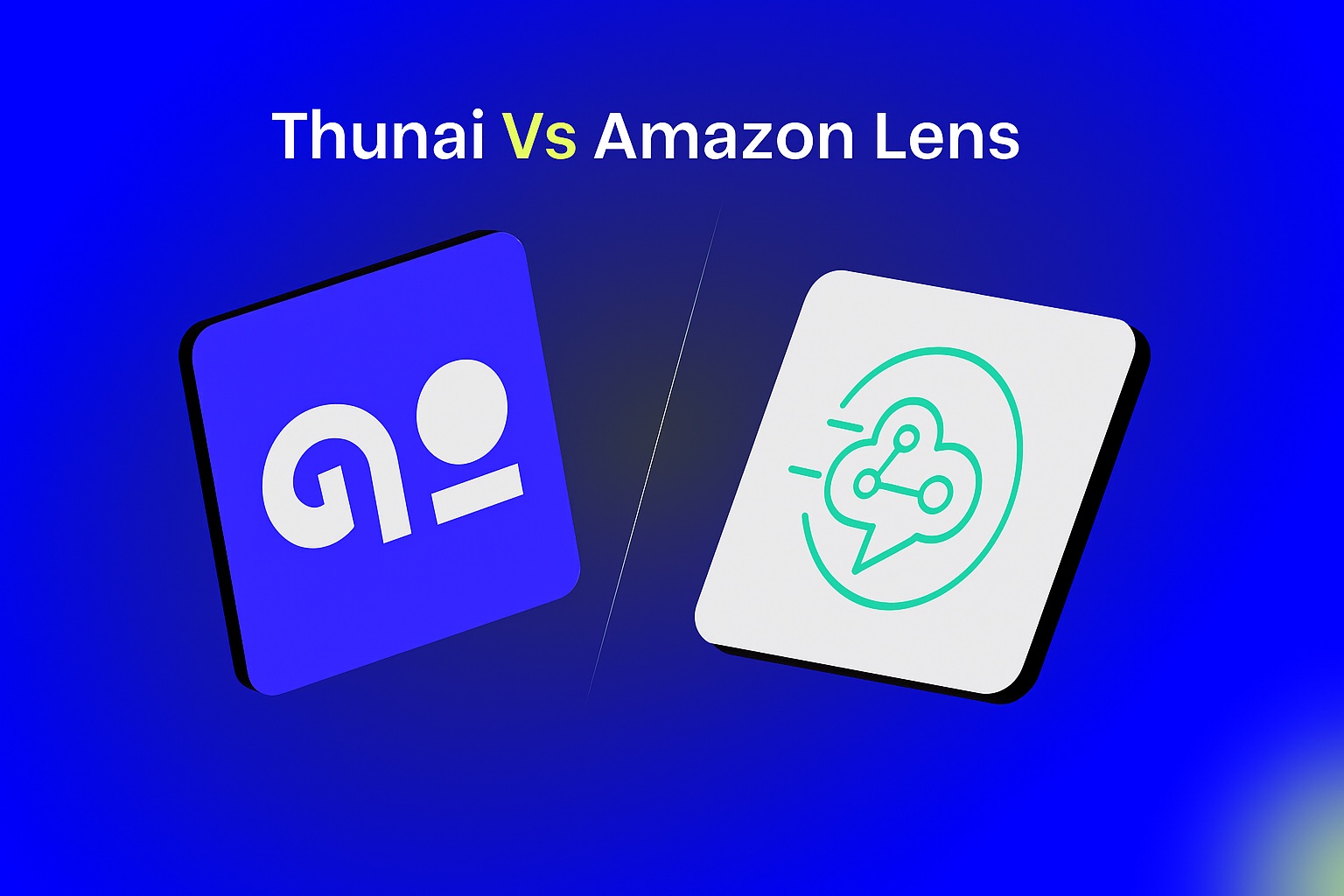Thunai vs. Glean: An In-Depth Comparison for Businesses



Thunai learns, listens, communicates, and automates workflows for your revenue generation team - Sales, Marketing and Customer Success.
TL;DR
Summary
- Glean is a Work AI platform built on an Enterprise Graph, designed to index and search all company information.
- Glean acts as a central source of information, but it is unverified, increasing the risk of AI hallucinations from outdated or inaccurate data.
- Thunai is an enterprise AI orchestration platform powered by the Thunai Brain, which unifies company knowledge and actively verifies it through Contradiction and Relationship Resolution.
- Thunai delivers a single source of truth and provides ready-to-use AI applications across functions — customer support (Thunai Omni), sales (Revenue AI), and product teams (Reflect AI).
Are you looking at Glean? You might have been impressed by its $7.2 billion valuation. The Forrester-validated 141% ROI is also impressive.
This tool is good for finding things. But what if it finds the wrong thing?
Glean is a single source, but of unverified information. Expert analysis confirms the platform lacks the native knowledge management functions to check if that content is correct or out-of-date.
This is a process that can lead your team to trusting AI answers. Those answers may be based on 3-year-old, out-of-date documents. However, if you want to build your AI plan on a foundation of trust, here’s how…
What is Thunai AI?
Thunai AI is an enterprise AI orchestration platform. The platform improves CX and revenue. Thunai as an agentic AI platform is set up to work for your business from day one with no-code AI agents.
At the center of this platform is the Thunai Brain. This is not only a simple database or a passive index. This is a central, living intelligence.
Thunai’s knowledge base brings together all your company knowledge. This takes in documents, spreadsheets, videos, and live application data. But its most important component is Contradiction and Relationship Resolution.
The Brain actively finds contextual conflicts across documents. The system brings them up. It then helps you sort out contradictions. This creates a single, checked source of truth before an AI agent ever uses the data.
From there, Thunai has ready-to-use systems. They are run by this trusted knowledge base:
- Thunai Omni: A full suite of AI agents for dealing with customer interactions across voice, chat, and email. The system analyzes sentiment in real time. It also allows for handing off to a human.
- Thunai Meeting Assistant: An active participant that sits in on your calls. The assistant gives real-time transcription. It also acts as a Co-Pilot, pulling up live, checked answers from the Brain.
- Revenue AI and Reflect AI: Forward-thinking modules that look for new sales opportunities by listening to calls. They also help product teams by keeping an eye on product health in real time from Jira and customer chats.
What is Glean AI?
When you think about building a Work AI, you need a tool made for enterprise-wide search. Glean (glean.com) is a platform for enterprises. The platform is built on three pillars: unified Enterprise Search, a generative AI Assistant, and no-code workflow Agents.
Glean's key technology is its own Enterprise Graph. This is a deep map of all a company's data. It also maps user relationships and security permissions. The system is set up to bring together knowledge from a best-of-breed stack, like Slack, Google Workspace, and Salesforce.
The system's main parts are:
- Glean Search: The foundation of the platform. This hands over a single search bar for all enterprise applications.
- Glean Assistant: A conversational AI layer built on the Enterprise Graph. This lets users summarize content and analyze insights.
- Glean Agents: A low-code/no-code platform for business users to build and put out custom workflows.
This makes the platform a single source, but of unverified information. That said, the AI answers might be you out-of-date results from docs that are 3 years old. After all, what good is finding information if you can't be sure it's correct?
Why Enterprises Prefer Thunai Over Glean
The choice between Thunai and Glean is a major one. For many enterprises, the choice comes down to one question: Do you want to find information, or count on and act on it?
Enterprises prefer Thunai because it is a complete, checked system, not just a search list.
Glean is a tool, but the tool comes with a main PROBLEM: the tool is a single source, but of unverified information. Thunai is an automatic, action-oriented platform that gives checked value on day one.
Thunai Unifies and Sorts Our Information First: The Thunai Brain doesn't just list your data; the platform brings it together and cleans it up. The platform finds and helps you sort out contradictions before they become AI hallucinations. This creates a single source of truth. This makes every agent and every other system in your company one you can count on.

Thunai Automates Your Workflows With Retrieved Data: You do not just look for meeting notes; Thunai's assistant sits in on your call and acts as a Co-Pilot. You do not just look for leads; Revenue AI looks for and finds opportunities in calls and chats. You do not just look for support tickets; Thunai Omni is a complete customer interaction system.

Easy to Create AI Agents: Thunai's Common Agent is a true no-code, visual builder. This lets business users in HR, Sales, and Support make their own automations. They can use simple drag-and-drop or AI prompts. They do this without writing a line of code or having to find a developer.

Thunai is an AI system for your enterprise that’s ready to go. Want to see Thunai in action?
Thunai vs Glean AI: Feature Comparison
So what is the real difference between Thunai and Glean? Glean gives you a jumping-off point for finding information. The tool is a world-class index. Thunai AI is built as a full, automatic system that is ready to get to work now.
The two systems have different goals. Glean hands over a Work AI to search and build generalist agents. Thunai hands over the finished product. Glean's parts are generalist tools. These include an Assistant and a general-purpose Agent builder.
Thunai’s parts are business-ready applications. These include a meeting assistant, a revenue finder, and an all-channel inbox. All are built on a self-checking knowledge base.
Component comparison — Thunai AI vs Glean AI
Drop-in HTML table to compare components and features between Thunai AI and Glean AI. Mobile-responsive and ready for docs or marketing pages.
| Component | Thunai AI | Glean AI |
|---|---|---|
| Active Knowledge Checking (Contradiction Resolution) | ✓ | X |
| Full, Ready-to-Use Meeting Assistant | ✓ | X |
| Forward-thinking Revenue & Lead Detection AI | ✓ | X |
| Unified All-Channel Inbox (Voice, Chat, Email) | ✓ | X |
| Forward-thinking Product Health Monitoring (Jira, etc.) | ✓ | X |
| Bidirectional (Read/Write) CRM Connection | ✓ | X |
| Unified Enterprise Search | ✓ | ✓ |
| Generative AI Assistant | ✓ | ✓ |
| Low-Code/No-Code Agent Builder | ✓ | ✓ |
User Experience and Reviews
Glean's market feedback, on the surface, looks good. The platform has an industry-leading ~40% daily/monthly active user (DAU/MAU) ratio.
The platform also has a 93% use rate over two years, according to a study they paid for. Users are clearly using the product for search.
On the other hand, expert and user analysis point to a main problem. This problem fundamentally hurts the user experience.
- First, Glean has the Context-Switching Problem. The platform primarily works as a standalone web page. This makes users click away from their main work (like Slack, Teams, or Zendesk).
- They must open up the Glean app, find the information, and then go back. This creates problems and context-switching. This is the very problem the platform says it solves.
- Second, the Generalist Agent Problem means that while Glean hands over an agent builder, the agents can't deal with the specifics of a complex role. An example is understanding a customer's tone.
Thunai is built on a different idea. The entire experience is set up to be no-code and embedded.
- You do not leave your customer support tool; Thunai Omni hands over a full system for customer interaction. You do not build a generalist agent to listen to calls. You bring in the Thunai Meeting Assistant, which acts as a co-pilot in on the meeting.
- The Thunai user experience is about embedded action. The Glean user experience is about external search.
Why would you choose a tool that makes you jump through hoops just to get an answer?
Performance and Reliability
You need to be able to count on an AI system. This is not just about whether a model gives a correct answer.
This is about whether the entire business process is one you can count on. Is the process clear? Is the process built on trustworthy data?
- Glean's way of being dependable is technical and model-centered. The platform uses its Enterprise Graph and Retrieval-Augmented Generation (RAG) to base its models in company data. But this is where the key FLAW lies.
- The platform is a single source, but of unverified information. Because Glean lacks Knowledge checking, the platform might give you out-of-date results from docs that are 3 years old. This is not something you can count on.
Thunai's way of being dependable is all-around and business-centered. The way starts with the Thunai Brain.
- For sorting out your data mix-ups: The Thunai Brain is a living knowledge system. The system has Contradiction and Relationship Resolution. The system actively finds contextual conflicts across documents. The system helps you sort out contradictions. This means you can count on your information before an agent ever uses the data.
- For breaking down silos: Thunai's performance comes from its MCP (Multi-Connect Protocol). This is a deep connection layer, not just a set of APIs. This lets a true, two-way flow of information and bidirectional sync happen. Thunai can both read data from your CRM and put data back into it.
- You can track everything: With the Thunai Common Agent, you get full tracking of all user-agent chats and API calls executed.
Glean's being dependable is about finding the data. Thunai's being dependable is about counting on the data.
Pricing and Value for Money
A platform's real cost is not on the pricing page. The real cost is in the full cost over time. This is where the difference between Thunai and Glean becomes an important financial choice.
Glean's sales model is not clear. The model is expensive. The model makes getting started hard. The company does not share its pricing details. The company pushes all customers into a sales-led negotiation. The model is per-user, per-month.
The cost goes up quickly. The cost goes up without warning.
- High Starting Price: People guess the starting price is $50+ per user/month.
- Minimum Contract Value: Customers say there is a minimum of 100 users. This means a minimum annual contract value (ACV) of $60,000. Other data shows a $50k-$66k minimum deal size.
- The Paid POC Barrier: The biggest secret cost is that Glean's Proof of Concept (POC) tests are all paid. The tests can get expensive. This is a test you have to pay for just to try the tool.
On the other hand, Thunai is set up to give value, not to charge for expensive tests. The design is about business outcomes and immediate, measurable value.
Security and Compliance
For any enterprise, especially in finance or HR, security and compliance are a must-have. Both platforms take this seriously. But their way reflects their central idea.
Glean sees this. Its Glean Protect governance layer is a key part. The layer is permissions-aware. The layer follows real-time permissions and control. A user can only find content they already have permission to access.
These are strong, essential parts. However, they are also the bare minimum for any true enterprise-grade platform. They protect the search query.
Thunai has an equally strong, multi-layered security system. The system is designed to guard your data not just inside the platform, but across your whole setup. The system protects the data itself.
- Data Isolation: The Thunai Brain is built on a Knowledge Graph setup. This allows for Knowledge Compartmentalization. This isolates sensitive or tenant-specific data by default. The system makes sure data boundaries are never crossed.
- Full Traceability: Thunai's Common Agent gives full tracking of all user-agent chats and API calls executed. This gives you a complete audit record for compliance, not just a permissions log.
- Ecosystem Security: Thunai's security model covers its 35+ connectors by the MCP (Multi-Connect Protocol). This makes sure that all data is protected with enterprise-grade protections. This applies whether the data is stored in the Brain or being sent to your CRM by a bidirectional sync.
FAQs on Glean vs. Thunai
What is the main difference between Glean and Thunai?
Glean is a search list (a Finder). Its primary job is to list all your apps and help you look for information. Its main problem is that it's a single source of unverified information. This means the platform can't tell if a document is correct or out-of-date.
Thunai is a complete orchestration platform (a Doer). Its Thunai Brain has Contradiction Resolution to sort out your data first. The platform then uses this checked data to run automatic, ready-to-use applications for support, sales, and meetings.
What is the main difference in pricing?
Glean's pricing is not clear and is expensive. The pricing starts at around $50+ per user/month with a minimum $60,000 annual contract. Most importantly, the platform makes you get a paid Proof of Concept. This makes you pay a high price just to try the software. Thunai's model is about delivering business value, not about high-cost, required tests.
Glean has Agents. What does Thunai have?
Glean's agents are called generalist. They can't deal with the specifics of complex roles. You have to make, test, and put them out yourself.
Thunai hands over a no-code Common Agent for building custom workflows. But the platform also comes with a suite of ready-to-use applications that are ready to work on day one. These include Thunai Omni (customer support), Revenue AI (sales), Reflect AI (product), and the Meeting Assistant.
Can Thunai connect to my existing tools like Glean?
Yes. Glean has 100+ connectors. Thunai has the Multi-Connect Protocol (MCP). This is a strong connection layer for 35+ apps that lets a true, bidirectional sync happen. This is a key difference. Glean mostly reads data for search. Thunai's MCP can both read data from your CRM and put data back into it. For example, the platform can change a record or create a ticket in real time.

.png)



